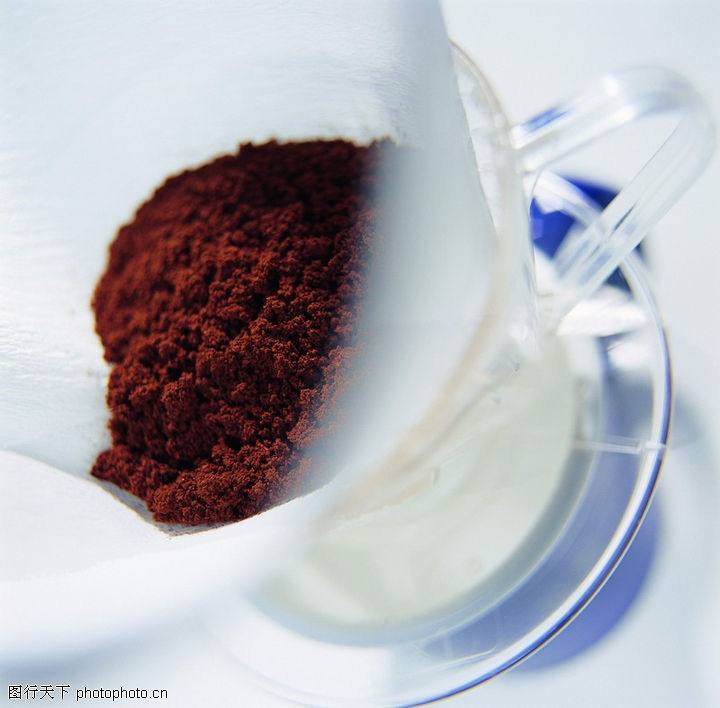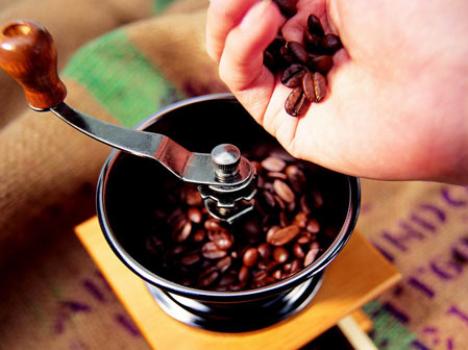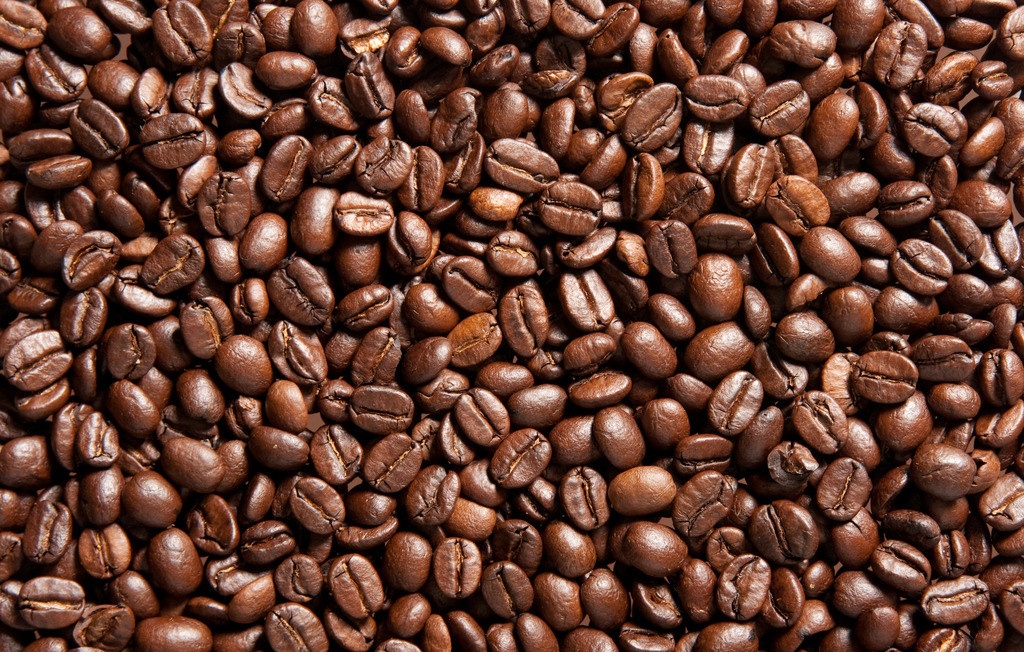The overall flavor shows the flavor, characteristics, taste and manor of Latin American coffee with excellent balance.
Latin America (Latin America)
In 1721, French naval officer Gabriel Mathieu de Clieu went through difficulties and obstacles to bring the first coffee sapling from Africa to the Latin American island of Martinique, which was the origin of coffee cultivation in Latin America. Because France was under the Bourbon dynasty, Arabica coffee grown in Latin America had another name, bourbon, which is now famous in the coffee industry. Bourbon is now an important branch of coffee in Arabica. The overall flavor of Latin American coffee is famous for its balance, and all the flavors in Latin American coffee can be found in Latin American coffee. The widespread use of wet treatment of raw beans is also one of the characteristics of Latin American coffee, and the good processing process also makes the bean shape more uniform and the defect rate lower than that of African coffee.
Peruvian (Peru) aroma 3 minutes brightness 4.5 minutes mellow 3 points flavor 4 points aftertaste 4 points
Suitable for roasting: Full city/Espresso/Dark medium and deep roasting is the most suitable for Peruvian coffee beans, too shallow to show flavor and sweetness.
Peruvian coffee used to be uncommon internationally, and it is generally believed that its handling process is hasty, so the evaluation is poor, which is the result of a previous state monopoly. In fact, Peruvian coffee has good growth conditions, and many of them are grown organically, so the quality of coffee beans has always been quite good. The famous producing area of Peruvian coffee is Chanchamayo, while Notre and Cuzco also have excellent works occasionally. Good Peruvian coffee beans are good in texture, acidity and complexity, which can be said to have both the brightness of Central American coffee and the mellowness of South American coffee.
Mexican (Mexico) aroma 3 minutes brightness 4 minutes mellow 3 points flavor 4 points aftertaste 4 points
Suitable for baking: Full cityfull city, start the pot at the beginning of the second explosion, whether it is mixed with the formula to make Espresso or brew a single product, Mexican coffee beans can be said to have a unique flavor.
Mexican coffee is a coffee-producing area from Cottpe and Veracruz in the north to Plumas in the central Oaxaca region to Chiapas in the southernmost, and the flavor varies from region to region. Although there are many producing areas in Mexico, but because the quality stability is not high, so many attempts can be made to select the high quality ones. Basically, the coffee standards of Oaxaca and Chiapas are relatively neat. Chiapas is close to the Vevetnango region of Guatemala, so its flavor is similar. In fact, Mexico is also a big producer of organic coffee with organic certification. Generally speaking, Mexican coffee has a light flavor, but it is mild and delicate, and the flavor is good, so it is worth a try.
Columbia (Colombian) aroma 3.5 minutes brightness 4.5 minutes mellow 3.5 minutes flavor 4.5 points aftertaste 4.5 points
Suitable for baking: Medial/City/Full city/Espresso/Dark/French Columbia beans are one of the few coffee beans that range from shallow roasting to very deep roasting, from clean light roasting to deep roasting sweetness, in such a wide range
Columbia beans will have different styles and features.
Once the second largest coffee producer after Brazil, Colombia, now the world's largest supplier of washed beans, has been overtaken by Vietnam. Colombia has become synonymous with good coffee after years of image-building. Despite the balanced flavor, thick texture, famous sour taste and aroma, most Colombian beans are mediocre and have no personality if you taste them carefully. When choosing Colombian beans, you should not only look at the grade marks, but also pay attention to the producing areas, because Colombia is currently graded according to the size of beans, so the Supremo or Excelso on the coffee bag refers to the size of beans rather than the quality, but the size of beans is not necessarily related to the flavor of the entrance, but is closely related to the altitude of the place of origin and taste, so this grading system is often criticized. In fact, most of the medium,
South American countries have switched to altitude classification, and only Colombia maintains this traditional classification system, which many Colombian coffee makers have recognized and have begun to demand a change in the classification system. Colombia's famous producing areas include Medellin, Armenia and Manisales, so the word MAM is sometimes seen on coffee bags, indicating that the coffee beans may come from any of these three producing areas. Almost all of Colombia's finest coffee beans come from traditional small farms, which grow old coffee trees from Typica, which are well planted and carefully harvested and treated, so they are of high quality but relatively low in yield.
Costa Rica (Costa Rica) aroma 3.5 minutes brightness 4.5 minutes mellow 3 minutes flavor 4.5 points aftertaste 4.5 points
Suitable for baking: if Light/Medial/City wants to show the perfectly balanced flavor of Costa Rica, it can never be baked deeply, it is recommended that the degree of City can be done, or even the beans can be added as soon as the first explosion is over, at this time the flavor and flavor will be both, close to the second explosion is the deepest limit of baking, do not enter the second explosion and waste the best coffee beans.
Costa Rican coffee is praised as "complete coffee" by many gourmets, because it is very balanced, the flavor is very clean and tight, the delicate sour taste with green apple (sometimes citrus or plum fruit), the body is tight but not thin, and the sweetness of the coffee will stay in the throat for a long time, so some people describe it as "perfectly balanced"! The best Costa Rican coffee has a chocolate flavor in its aftertaste. There are a total of 130, 000 coffee farms in Costa Rica. The most famous producing areas are Tarrzu, near the southern Pacific coast, and Tres Rios, north of San Jose, the capital. These areas have high altitude and good soil, so they have the densest planting density and stable coffee quality. Among these many coffee farms, the most famous is located in Tarasu. LaMinita Manor, which tastes as clear as a bell, the coffee at LaMinita is so good because it is careful and strict in everything from the planting of coffee trees to the handling of coffee beans. in fact, the estate produces not a small number of coffee beans a year, but very few of them are sold under the name of LaMinita, and the rest are selected to be sold only as beans from the Tarasu region. Because Tarasu is so famous, the fame of other producing areas is less known to the world, such as the Bols volcanic area and the Sanshui River producing area. The three major volcanic areas even produce excellent coffee in Orosi and so on on the north side of the Atlantic Ocean. Another problem with strong brands is that many coffees that are not produced in Tarasu are also mixed with fish eyes and pictures of Tarasu, so it is the only way to try it in person.
Guatemala (Guatemala) aroma 3.5 minutes brightness 4.5 minutes mellow 3.5 minutes flavor 4.5 points aftertaste 4.5 points
Suitable for baking: Light/Medial/City shallow roasting, city can best show the characteristics of Guatemalan coffee, too deep will reduce the fragrance of the fruit, if you like the smoky taste, you can bake close to the second burst, but still do not enter the second burst as the principle.
As the United States is deeply involved in coffee agriculture and is heavily exploited, huge North American multinational groups control most of the producing areas and produce low-altitude, low-quality coffee at very low wages. These shoddy coffees don't represent real Guatemalan coffee. In fact, Guatemala has unique planting conditions, and many producing areas have ideal altitude, soil and climate conditions, so they can produce the most complex and delicate coffee in the world. The most famous is Antigua in the volcanic area, where coffee is famous for its smoky taste and the performance of spices and fruit acids is not poor. Huehuetenango in the north is more fruity, but slightly lighter than Antigua. In addition, coffees such as Kovan, Frejanis and Kitcher also have their own characteristics, and coffee from Atitland has occasionally been produced in recent years.
El Salvador (El Salvador) aroma 4 minutes brightness 4.5 minutes mellow 3 minutes flavor 4.5 points aftertaste 4.5 points
Suitable for baking: if City/Full city city has a preference for heavy flavor, it doesn't hurt to bake it a little deeper.
Most people remember El Salvador as a place with frequent wars, but it is true that years of civil war have prevented El Salvador's coffee beans from standing out in the international market. in fact, El Salvador has three conditions: soil, height and climate. It should not be difficult to produce coffee as spectacular as Guatemala and Costa Rica, and coffee could be grown in El Salvador as early as the 19th century. It was once even the most important cash crop in the country. In recent years, El Salvador has a stable political situation and an open market economy, so its coffee beans have gradually come to the fore in the international market. Most of the Salvadoran coffee is certified organic coffee, the taste is fresh and bright, the fruit flavor is also rich, the flavor is slightly thicker than the beans of neighboring countries, the overall pull is quite good, I believe that it will be better and better in the future.
Panama (Panama) aroma 3.5 minutes brightness 4.5 minutes mellow 3.5 minutes flavor 4.5 points aftertaste 4.5 points
Suitable for baking: Light/Medial/City shallow to medium baking, shallow to the end of the first explosion; do not enter the second explosion at the deepest, otherwise it will damage its clean brightness and reduce its complexity.
Coffee dealers often joke: "good Hawaiian beans are actually Panamanian beans, good Jamaican blue beans are Panamanian beans, and good Costa Rican beans are actually Panamanian beans." Although it is a joke, what is revealed is the high praise of Panamanian beans in the boutique coffee world! Panamanian coffee beans are cheap, high-quality and stable, and often easily surpass other famous coffee beans, which is why many Panamanian beans are passed off as other high-priced beans. High-end Panamanian coffee beans have a complex and pure flavor, with just the right mellow and bright taste, it is not too much to call it the most valuable coffee. Panamanian coffee is grown at a high altitude, and many famous estates are operated for generations, with a long tradition and rich experience, so the coffee produced is naturally of high quality.
Nicaragua (Nicaragua) aroma 3.5 minutes brightness 4 minutes mellow 3.5 minutes flavor 4 points aftertaste 4 points
Suitable for baking: City/Full city people who like deep-baked taste can try Jinotega and Matagalpa, baking beans when the second explosion is dense, when the flavor is thick but well balanced, with a strong bitterness and sweetness, it is very suitable for Espresso. Of course, Nicaragua beans are also very suitable for medium baking, so it is recommended to try them all.
Like most Central American coffee-producing countries, Nicaragua has good growing conditions. Most of the high-end coffee beans come from high-altitude estates, and these beans represent "SHG grade" (Strictly High Grown). Most of Nicaragua grows traditional coffee varieties, such as Tibica, Bourbon, National Treasure Coffee, etc., as well as some Caturra coffee trees. High-end Nicaraguan coffee has the most classic flavor of coffee: thick texture, clean taste and overall balance. SHG is the only coffee in Central America without sharp acidity. Nicaraguan coffee is often underestimated, such as Sinotega and Matagalpa, which are better than many Colombian coffees, while Segovia is also good, somewhat similar to Mexico's Oaxaca.
Brazil (Brazil) aroma 3 minutes brightness 3.5 minutes mellow 3.5 minutes flavor 4 points aftertaste 4 points
Suitable for baking: the base beans used by City/Full city/Espresso as Espressode should not be baked too deep, because the bean density is low at low altitude, and the pot produces coke bitterness under deep baking, and it is best to start the pot before the second explosion. As for high-grade Brazilian beans, they can have a wide baking range, ranging from city to the middle of the second explosion.
Brazil is the largest coffee producer in the world, and its history can be traced back to the early 17th century. Although the output of Brazilian coffee is the largest in the world, most of them are low-quality Arabica beans and Robusta coffee beans. This is because most of the Brazilian coffee grows in a low altitude, non-volcanic soil, or even a prairie with no forest shade at all. These congenital defects cannot be made up for by new farming techniques, so most people in the boutique coffee world do not have a good impression of Brazilian coffee. However, this does not mean that Brazilian coffee is unbearable. In recent years, Brazilian coffee farmers have worked hard to equate Brazilian coffee with high-quality coffee, and the country's coffee associations have also done their best to help, and their efforts have paid off. the prices auctioned in the coffee market are also quite beautiful. The three main coffee producing areas in Brazil are Bahia, Minas Gerais and Sao Paulo, but most of the best Brazilian beans come from Minas Gerais, and the most famous Hirado is a small producing area in Minas Gerais. As for Santos,
(Santos) is the largest and oldest coffee export port in the bar, and beans marked Santos may come from anywhere in Brazil, so it is not a useful regional or grade indicator. Ordinary Brazilian coffee beans not only have a poor appearance and uneven size, but the important thing is that the taste is very mediocre and undistinctive, and some of them have an unpleasant smell of iodine. Good Brazilian beans come from old coffee trees grown in Bourbon. They smell like stone fruit, taste sweet and low acidity, have the bittersweet taste of chocolate, and some people use the term "extremely smooth and smooth" (Strictly Soft) to describe top Brazilian coffee. Brazil beans have always been an indispensable ingredient in Espresso recipes because they are rich in oil. Good Brazilian beans are mellow, flavored and sweet, but they do not take away the flavor, providing the best stage for other coffees to enjoy.

Important Notice :
前街咖啡 FrontStreet Coffee has moved to new addredd:
FrontStreet Coffee Address: 315,Donghua East Road,GuangZhou
Tel:020 38364473
- Prev

Slightly fragrant and refreshing Vietnamese coffee flavor, characteristics, taste
Vietnamese coffee has a strong flavor, light sour taste, smooth and moist taste, slightly bitter in mellow, full-bodied, refreshing and refreshing. The representative products are moossy Coffee, Central Plains Coffee (G7 coffee), Saigon Coffee (SAGOCAFE) and Highland Coffee. Vietnam's geographical location is very favorable for coffee cultivation. Southern Vietnam has a hot and humid tropical climate, which is suitable for growing ROBUSTA coffee.
- Next

Balanced, clean, Costa Rican Yersalo coffee flavor, characteristics, taste and manor
Staleika coffee has always been regarded as a perfect type of classic flavor, balanced, clean and mild is his tone. This batch of western valley Yerzaro treatment plant is famous for its excellent natural geographical conditions and excellent regional planting management techniques. Almost perfect classic flavor, lively citrus flavor in the acidity, BlackBerry aroma, acidity and taste thick, melons
Related
- Detailed explanation of Jadeite planting Land in Panamanian Jadeite Manor introduction to the grading system of Jadeite competitive bidding, Red bid, Green bid and Rose Summer
- Story of Coffee planting in Brenka region of Costa Rica Stonehenge Manor anaerobic heavy honey treatment of flavor mouth
- What's on the barrel of Blue Mountain Coffee beans?
- Can American coffee also pull flowers? How to use hot American style to pull out a good-looking pattern?
- Can you make a cold extract with coffee beans? What is the right proportion for cold-extracted coffee formula?
- Indonesian PWN Gold Mandrine Coffee Origin Features Flavor How to Chong? Mandolin coffee is American.
- A brief introduction to the flavor characteristics of Brazilian yellow bourbon coffee beans
- What is the effect of different water quality on the flavor of cold-extracted coffee? What kind of water is best for brewing coffee?
- Why do you think of Rose Summer whenever you mention Panamanian coffee?
- Introduction to the characteristics of authentic blue mountain coffee bean producing areas? What is the CIB Coffee Authority in Jamaica?

